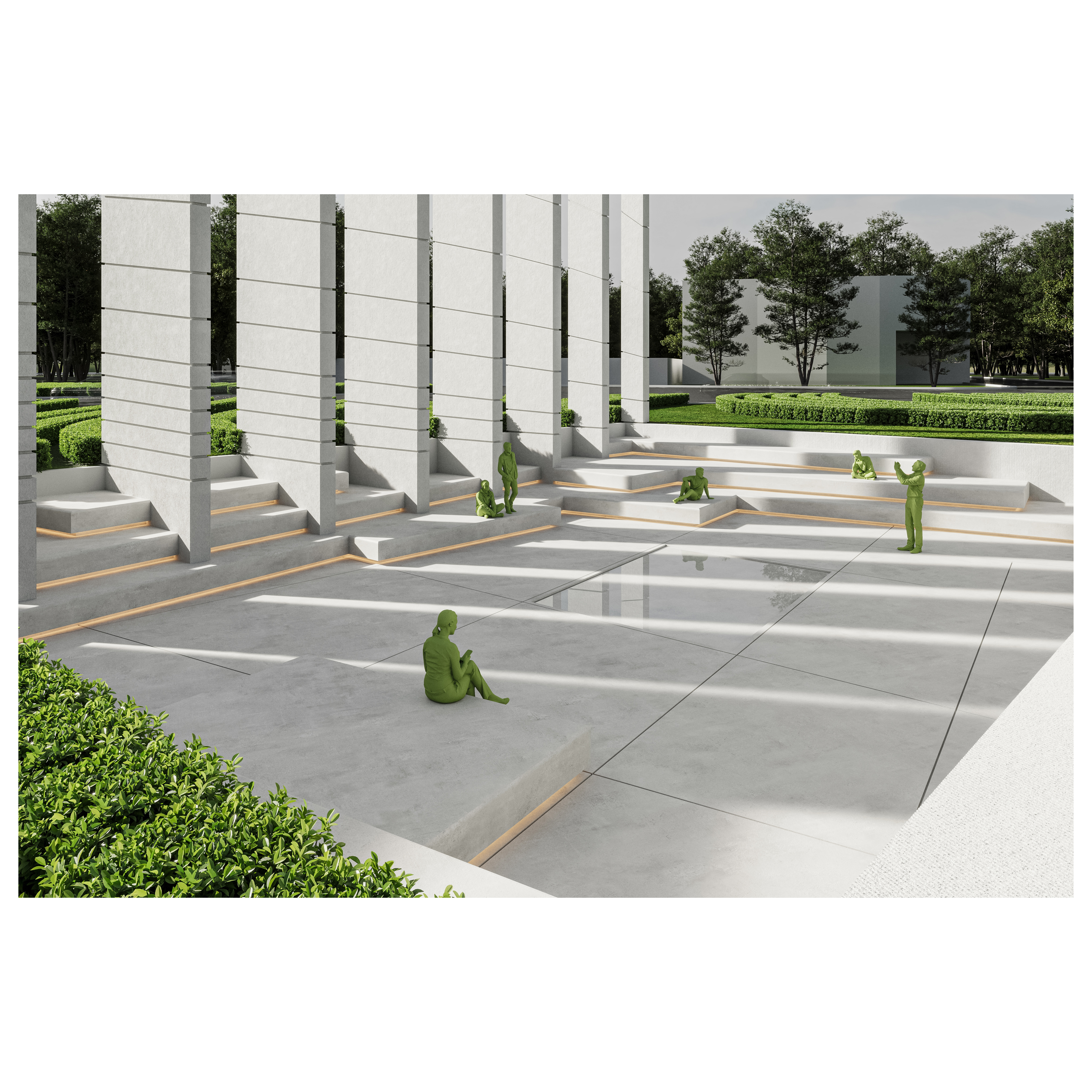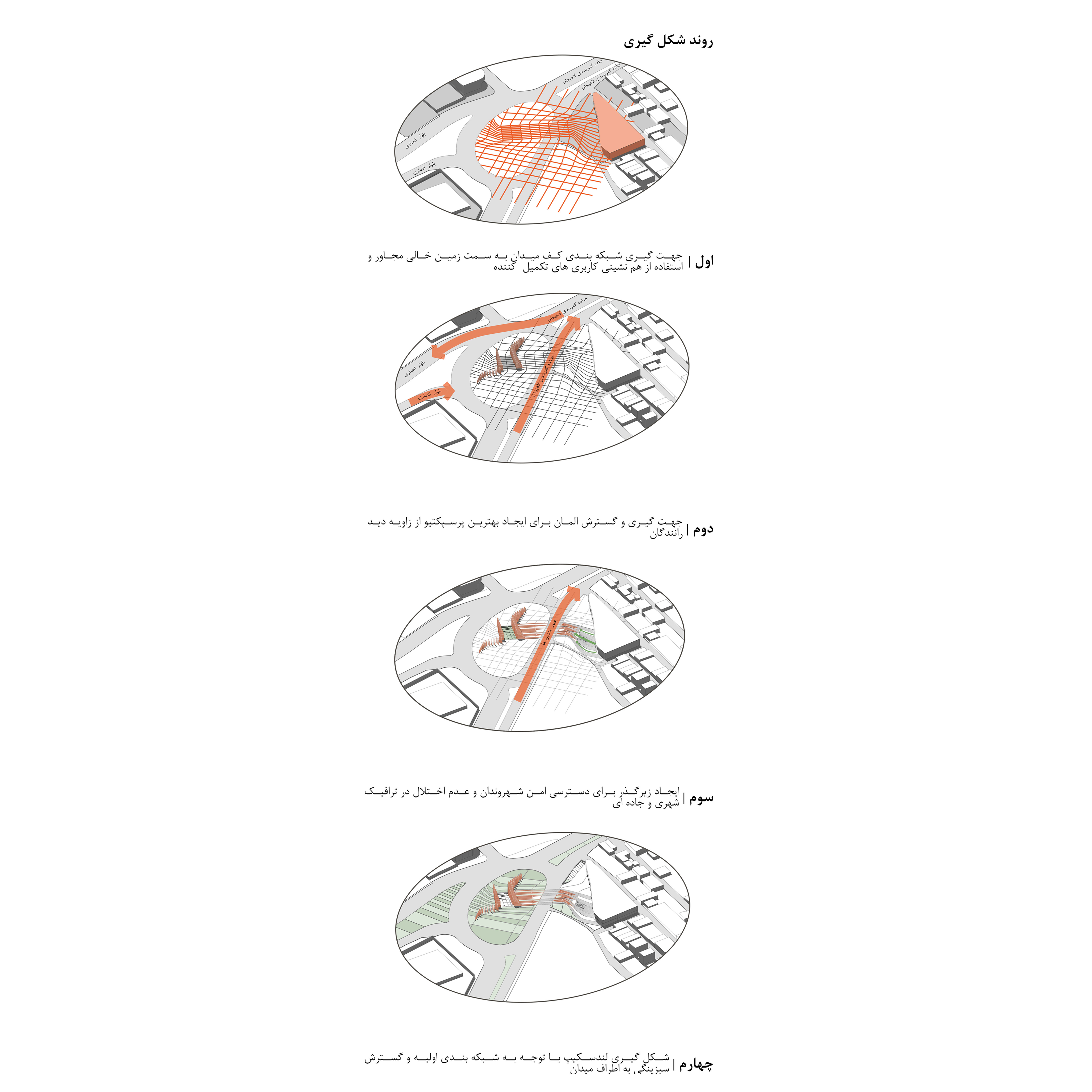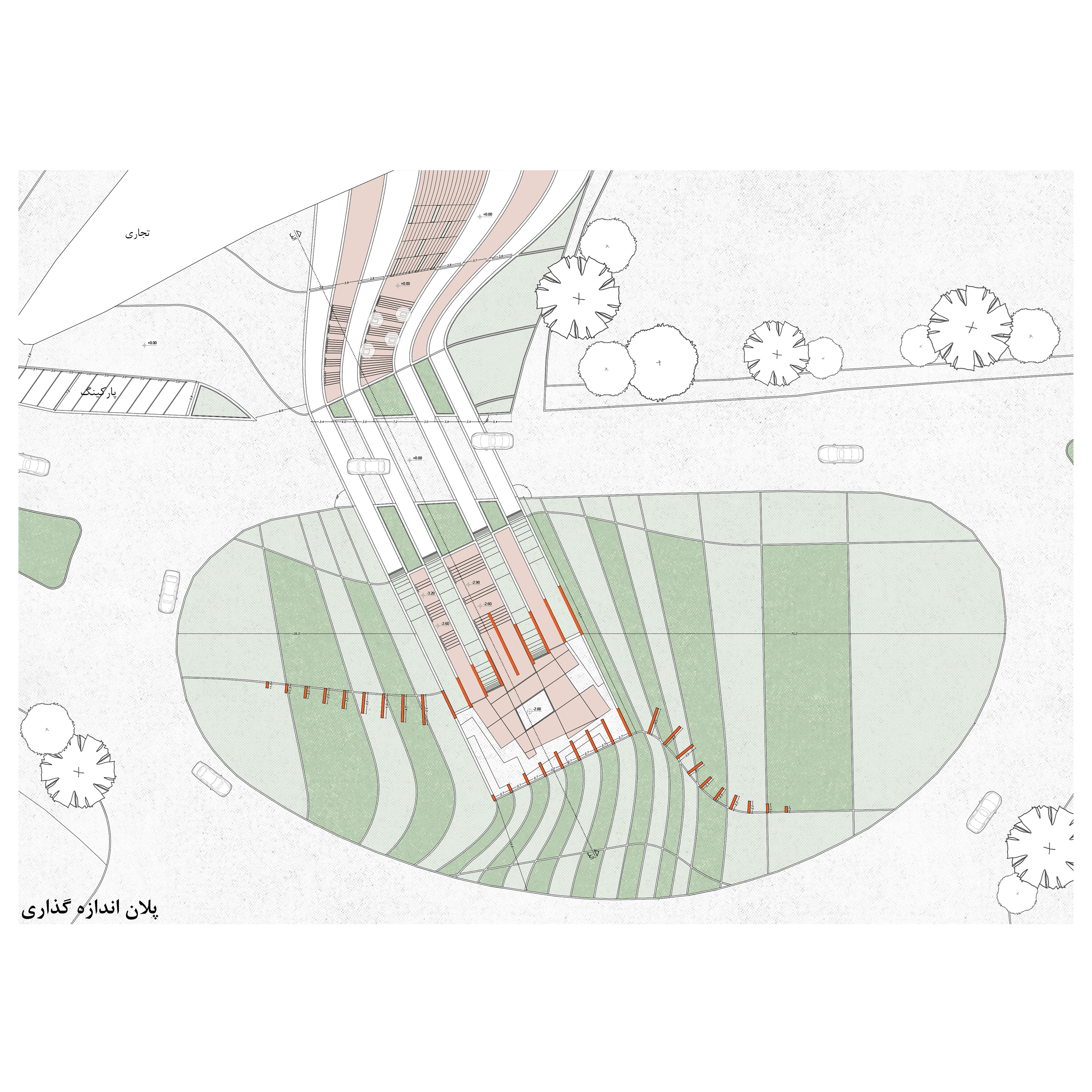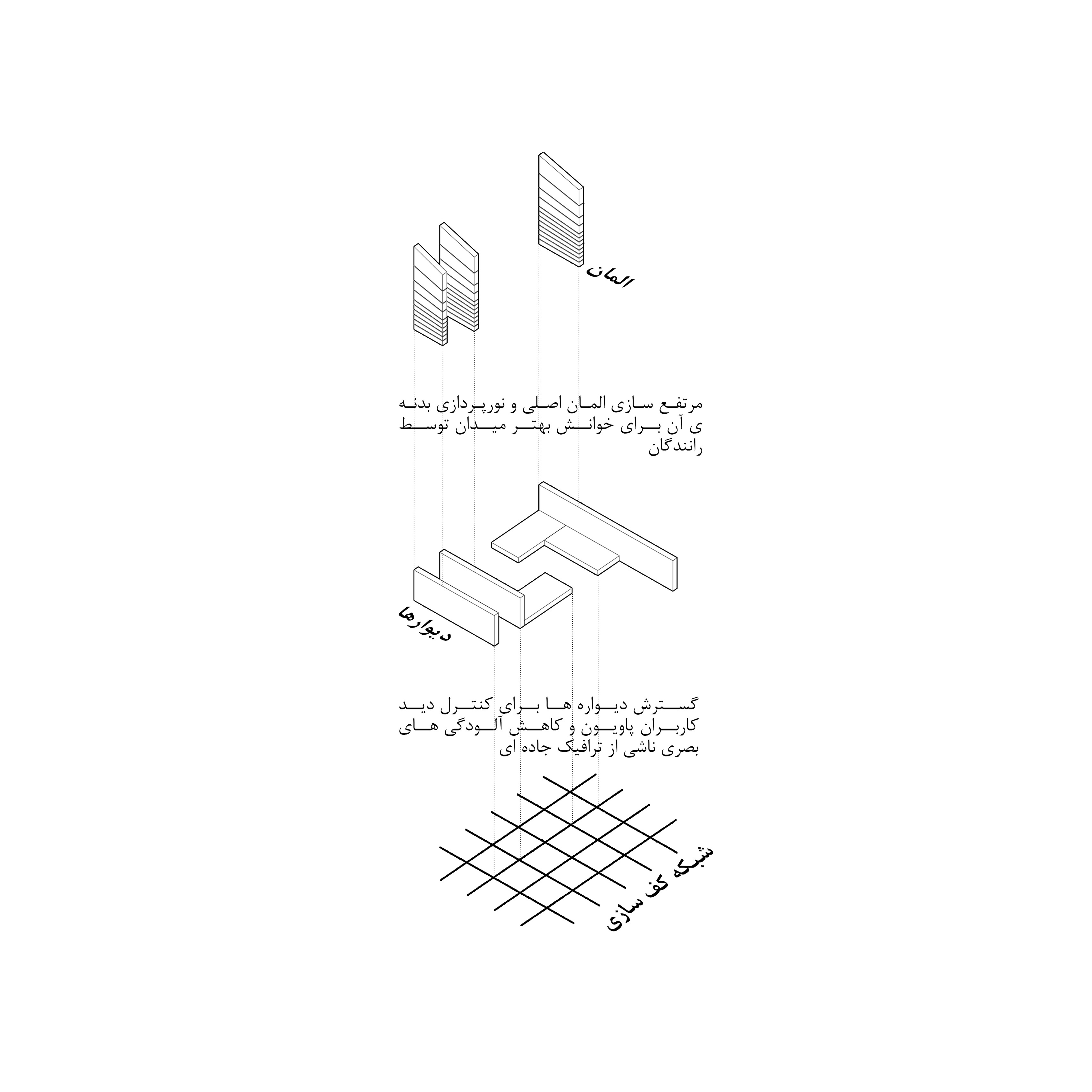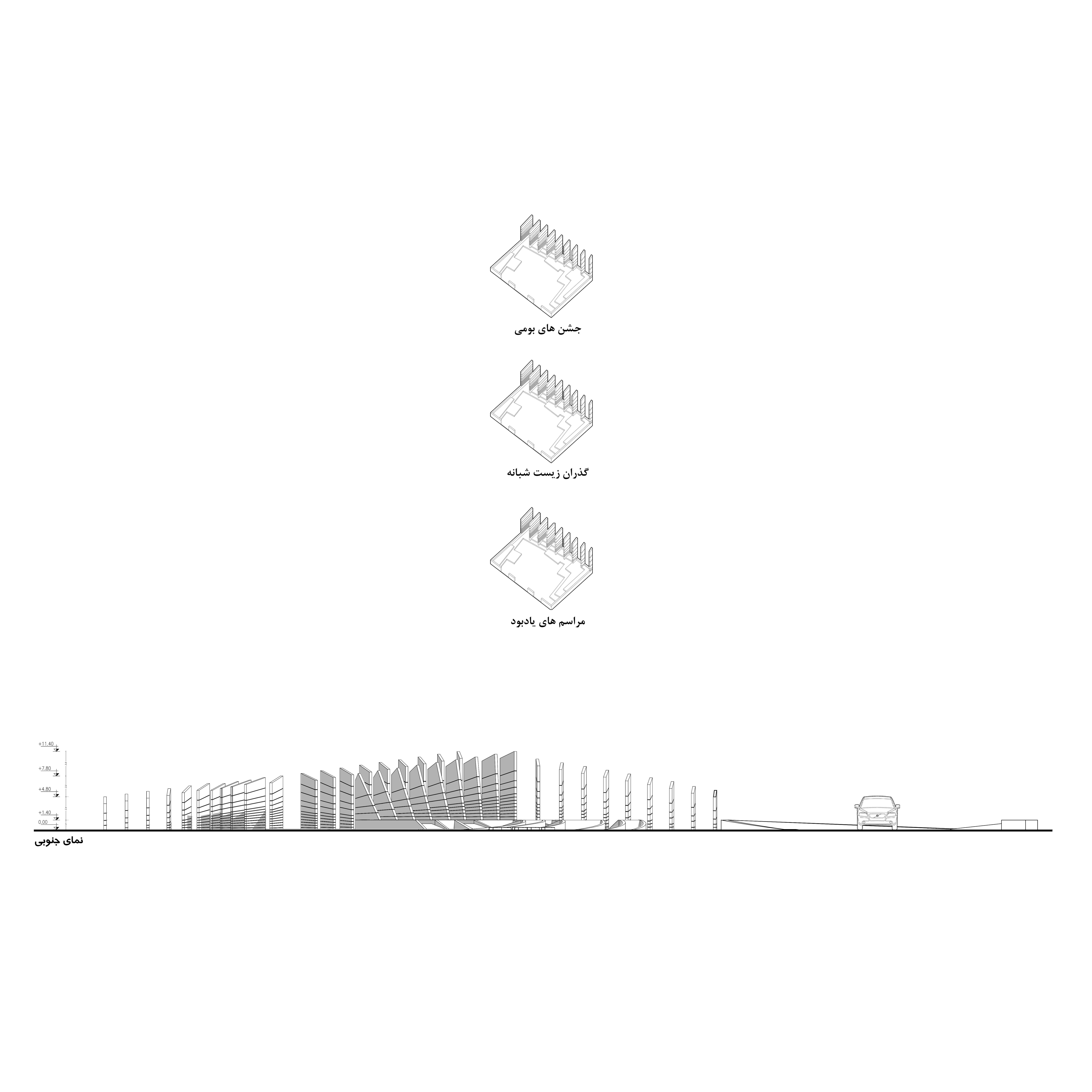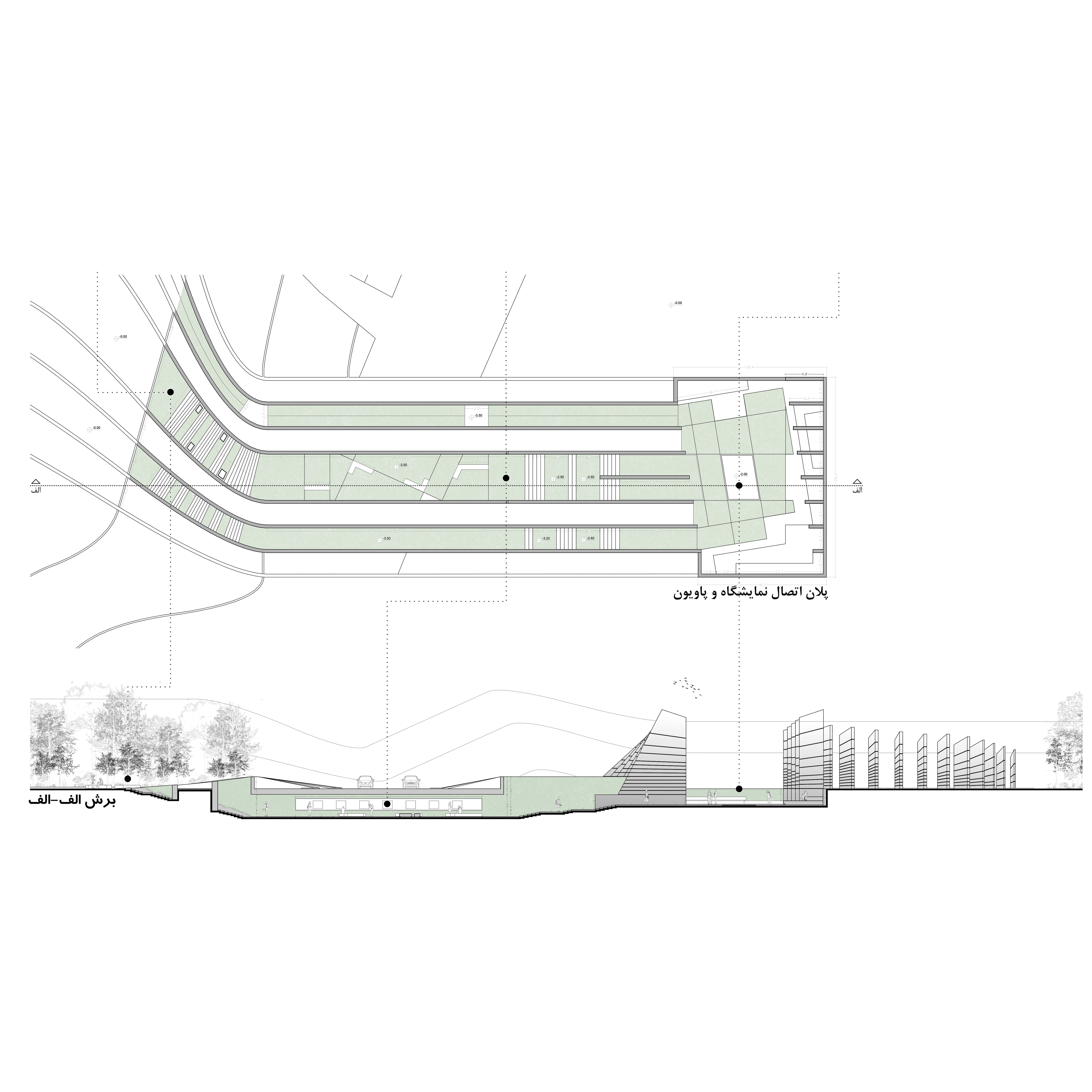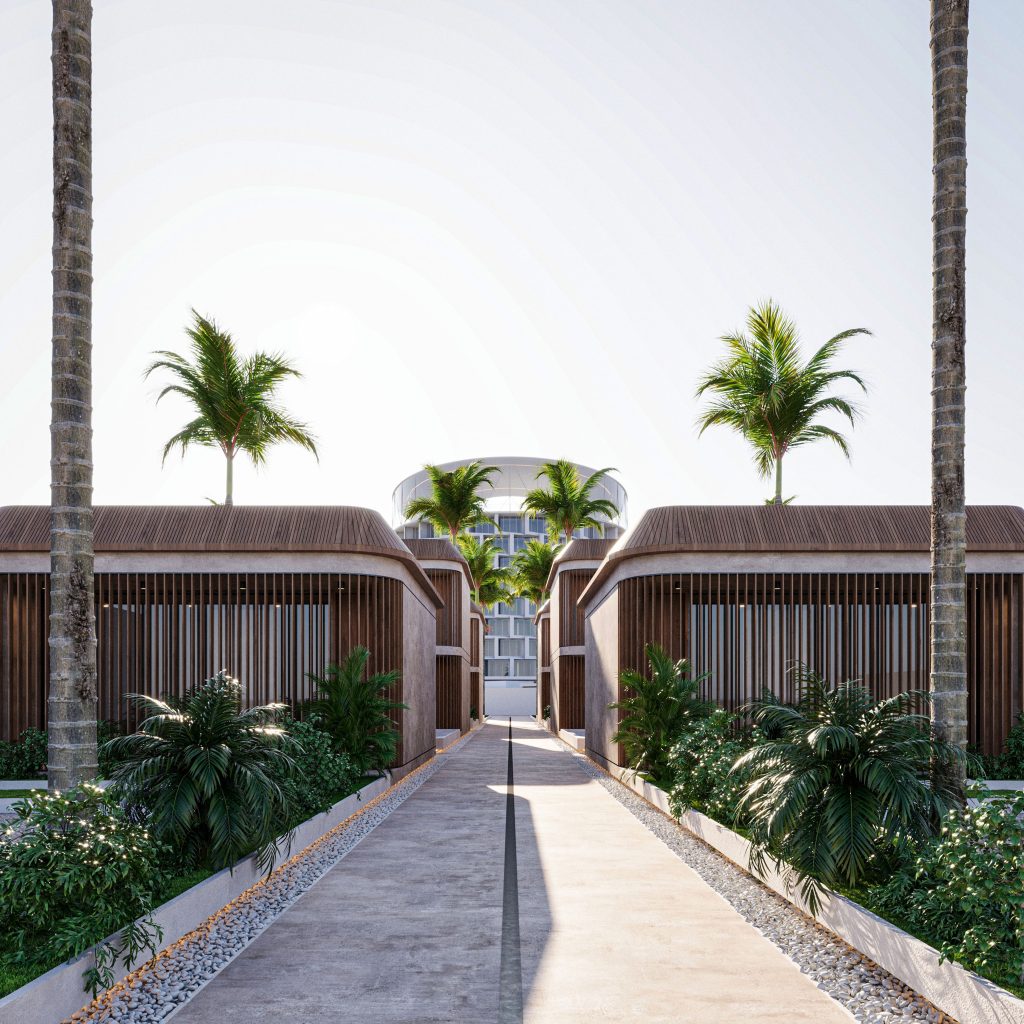Tea, initially an unfamiliar product, has become deeply intertwined with the culture of the people of Lahijan through the dedication of tea farmers and cultivators. It has transformed into a local symbol of the city. The design team, acknowledging the significant role of tea farmers, has chosen these individuals as the central imagery of the design. They have incorporated the movement of tea farmers in long lines, reflecting the linear topography of tea cultivation areas, as the primary element of the design.
The urban plaza aims to revitalize the space and enhance urban living by fostering the growth of the local economy and contributing to the cultural and recreational environment. Rather than creating a single element solely for visibility from pedestrian and vehicle perspectives, the design features a central area for hosting seasonal and community events, as well as providing leisure space for residents and passersby. Surrounding this central space, a series of elements representing tea farmers forms a network based on the topographical lines and patterns of tea cultivation. This layout illustrates the ongoing connection between the design and human life.
To further enhance safety, the designers have created a lower elevation pathway that provides a route for guiding pedestrians away from the constant and hazardous flow of vehicles on the adjacent bypass road. Additionally, recognizing that the square attracts a substantial influx of visitors during the spring and summer, many of whom linger at the edges, designated parking areas have been included. This facilitates the movement of crowds toward the center of the square, allowing them to enter the newly designed plaza and experience an enriched urban environment.








